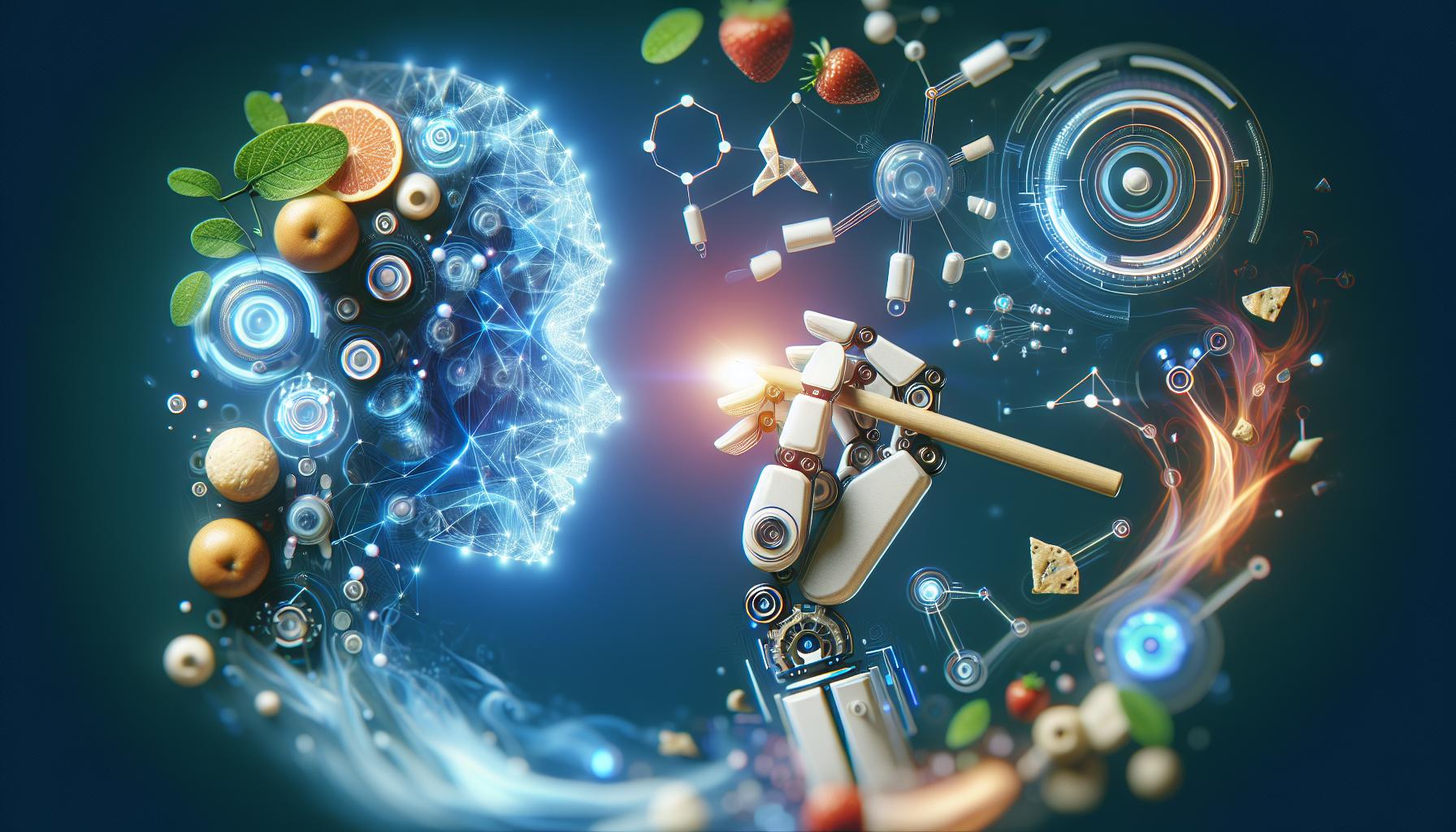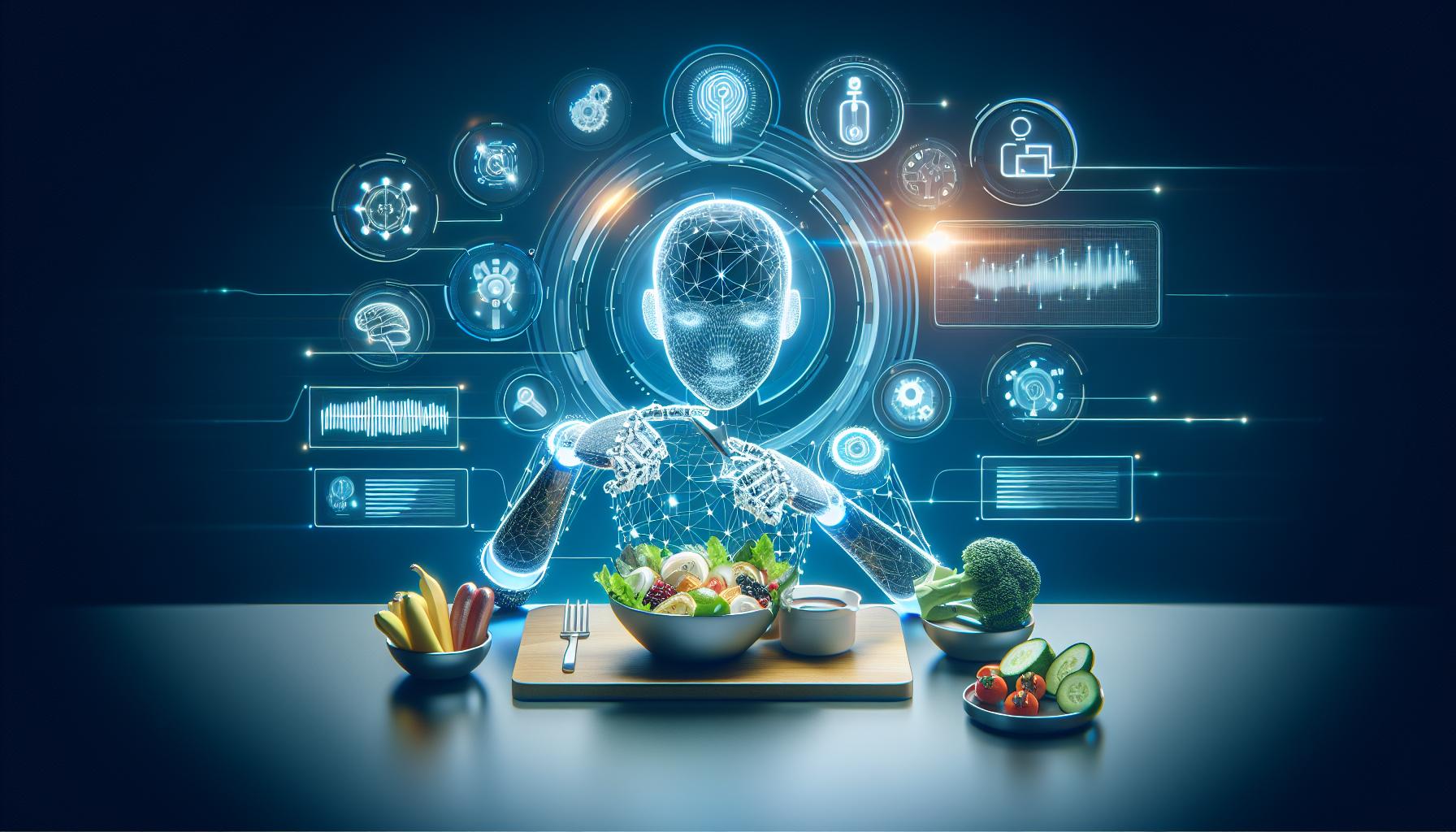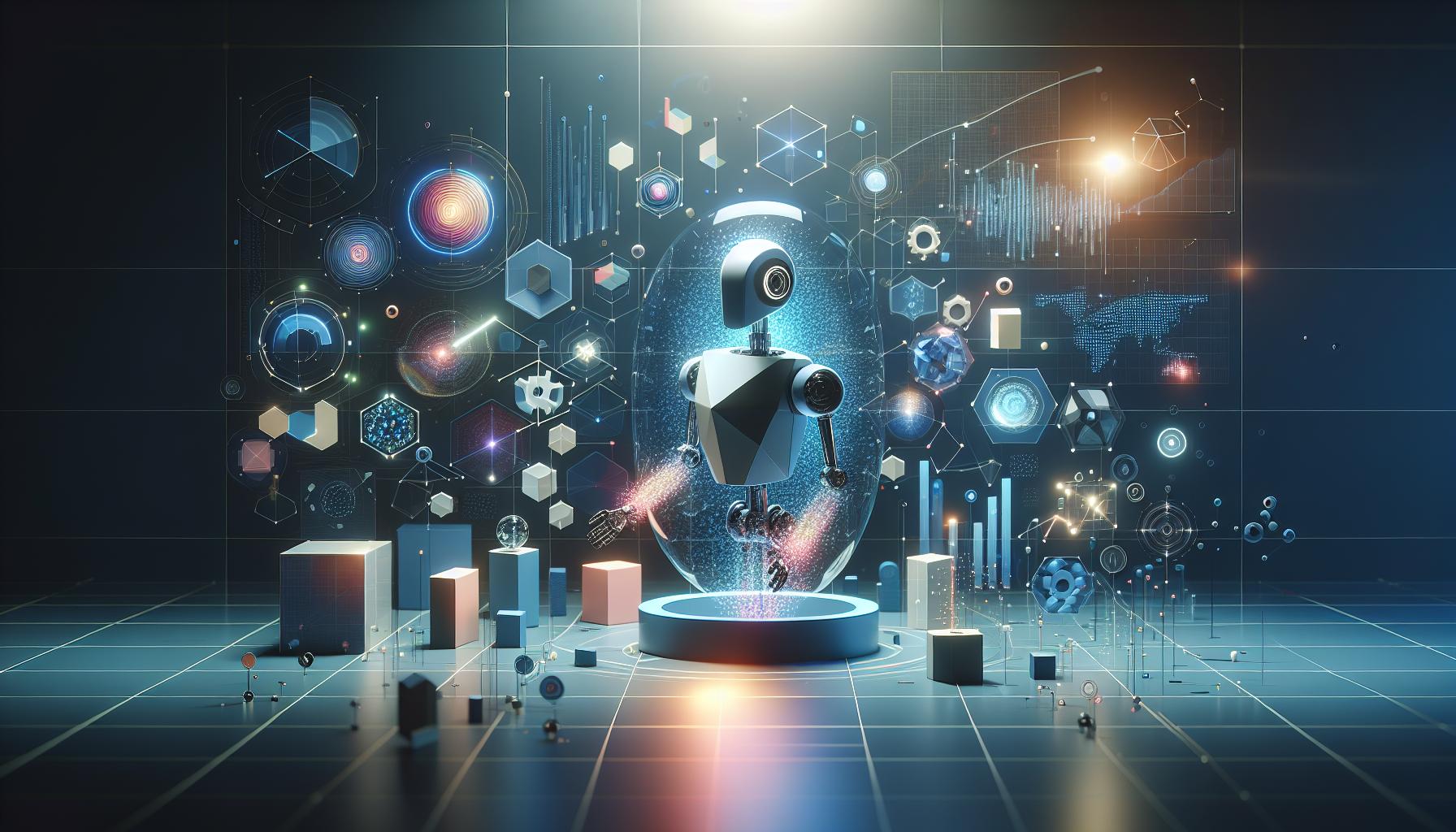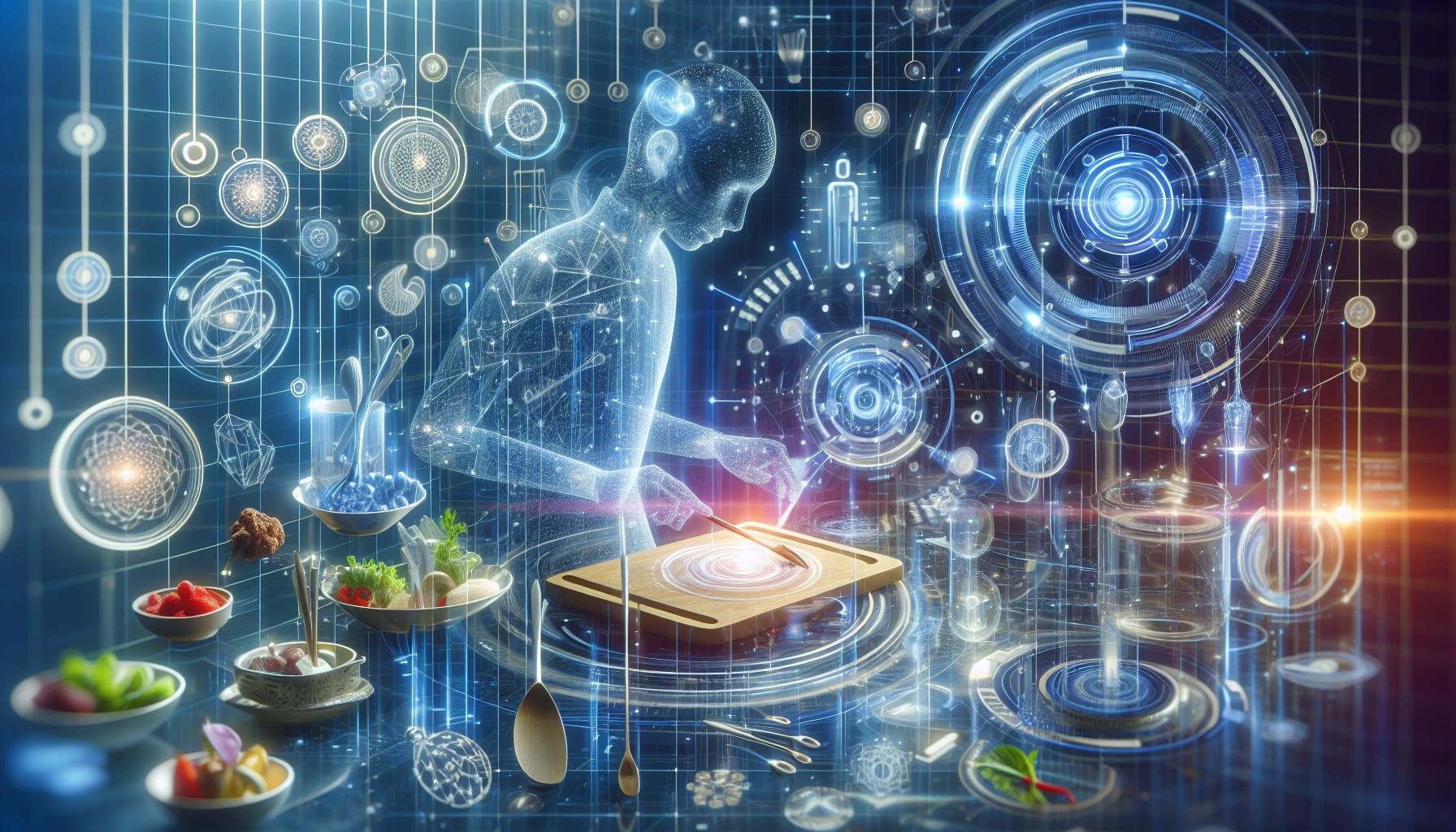In a world dominated by visuals, how can one create mouthwatering food imagery without the hassle of traditional photography? AI-generated food images offer an innovative solution for bloggers, restaurants, and food brands looking to entice audiences with stunning visuals, all while saving time and resources. Discover how these digital creations are transforming culinary marketing and enhancing visual storytelling.
Understanding AI in Food Imagery: How Technology is Transforming Visual Appeal
The rise of artificial intelligence is not just shaping industries like healthcare and finance but is also making a significant mark in the world of food imagery. With the increasing demand for visually appealing content, businesses are leveraging AI technology to craft stunning food visuals that captivate audiences and enhance marketing efforts. From restaurants showcasing their menus to food bloggers highlighting their creations, AI-generated food images are transforming the way we perceive culinary art.
Revolutionizing Culinary Aesthetics
AI is redefining the culinary experience by enabling the creation of high-quality images that are not only aesthetically pleasing but also highly customizable. Here are some key points illustrating this transformation:
- Instant Generation: AI can produce eye-catching food images in a matter of seconds, drastically reducing the time required for photography sessions.
- Customization: Using AI tools, users can easily modify elements like color, presentation, and even background settings to suit branding needs and audience preferences.
- Cost Effectiveness: Bypassing traditional photography costs, businesses can create appealing product images without extensive budgets, allowing for more resources to be allocated elsewhere.
- Endless Variety: Whether it’s about trying new recipes or presenting seasonal menus, AI can generate diverse images that reflect a range of culinary styles and innovations.
Application in Marketing and Branding
In the digital era, food branding relies heavily on visual appeal. AI-generated food images provide brands with powerful tools to engage consumers effectively. Here’s how incorporation of AI in food imagery can bolster marketing strategies:
| Strategy | Benefit |
|---|---|
| Social Media Campaigns | Consistent high-quality visuals attract more followers and increase engagement rates. |
| Food Blogs | Enhanced imagery can improve SEO rankings as stunning visuals keep readers on pages longer. |
| Menu Design | Visually appealing menus can lead to increased sales as customers are drawn to beautifully depicted dishes. |
Moreover, restaurants are successfully integrating AI-generated food images into their online reservations and food delivery platforms, enhancing the visual narrative that connects customers with their offerings. By providing a picture-perfect representation of dishes, they can entice diners and elevate the overall dining experience, particularly when leveraging platforms that thrive on vivid imagery.
As the world continues to embrace AI in food photography, it’s essential for businesses to stay ahead of the curve. Adopting AI-generated food images not only simplifies content creation but also ensures that brands maintain visual relevance in a fast-paced digital landscape.
Creating Delicious Visuals: Tools and Techniques for Stunning Food Images

In the world of digital media, captivating visuals are the key to engaging your audience, especially when it comes to food. With the rise of AI technologies, creating mouth-watering food images has never been easier. You no longer need to be a professional photographer or invest in expensive equipment to achieve stunning results. Instead, a combination of creativity and the right tools can help anyone craft images that make viewers’ mouths water.
Essential Tools for Crafting Food Imagery
Utilizing the right tools can significantly elevate the quality of your food images. Here are some must-try resources:
- AI Image Generators: Platforms like DALL-E, Midjourney, and Canva allow users to generate unique food visuals through text prompts, eliminating the need for traditional photography.
- Editing Software: Tools like Adobe Photoshop and Lightroom can enhance the final product, giving images a polished look with adjustments in lighting, color balance, and sharpness.
- Smartphone Apps: Applications such as Snapseed and VSCO provide an array of filters and effects that can help transform basic photos into eye-catching images.
- Food Styling Kits: Investing in props and backgrounds can add depth to your images. Consider incorporating unique plates, utensils, and fabrics that complement your food style.
Techniques for Stunning Images
Creating appetizing visuals is not just about the tools; it relies on implementing several key techniques that can make your food look even more appealing.
| Technique | Description | Example |
|---|---|---|
| Natural Lighting | Utilize soft, diffused natural light to enhance the food’s colors and textures. | Place your dish near a window for best results. |
| Angle Matters | Experiment with different angles—overhead, at a 45° angle, or eye level—to find the most flattering perspective. | Flat lays work wonders for plating and showcasing multiple food items. |
| Color and Contrast | Use contrasting colors to make your images pop. Pair vibrant foods with neutral backgrounds. | A bright green salad on a rustic wooden table can be visually striking. |
Incorporating these tools and techniques into your content creation workflow can drastically enhance the overall appeal of your food imagery. Whether you’re utilizing AI-generated visuals or enhancing existing photographs, the combination of modern technology with tried-and-true styling techniques can help you create images that not only attract attention but also entice viewers to engage with your content.
Customizing AI Imagery: Tailoring Food Photos to Your Brand

Imagery plays a crucial role in capturing the attention of potential customers, especially in the highly visual world of food marketing. With successful campaigns increasingly relying on stunning visuals to attract clientele, having access to well-crafted, enticing images is essential. AI generated food images offer a transformative approach to creating mouthwatering visuals without the need for extensive photography sessions. By harnessing the power of AI, brands can customize their food imagery to resonate with their target audience and reflect their unique identity.
Understanding Your Brand’s Visual Identity
Before diving into the realm of AI imagery, it’s important to understand what your brand represents. Your visuals should communicate your brand’s values, style, and essence. Consider the following elements when customizing AI-generated visuals:
- Color Palette: Select colors that align with your brand’s identity. Rich, vibrant colors may enhance the appeal of gourmet products, while softer tones might be ideal for organic or artisanal brands.
- Styling: Think about how food is presented. For instance, a rustic setting may work well for comfort food brands, whereas a sleek, modern look might suit high-end restaurants.
- Target Audience: Tailor imagery to resonate with your consumer base. A family-oriented brand might showcase hearty meals, while a health-focused brand might opt for bright, fresh vegetables and innovative dishes.
When using AI generated food images, you can input specific prompts that reflect these elements, ensuring that the results are not only visually appealing but also aligned with your brand values.
Practical Steps for Customization
To effectively create appealing visuals that are tailored to your brand, follow these actionable steps:
- Define Your Brand Narrative: What story do you want to tell through your food imagery? Outline key themes that highlight your brand’s mission.
- Select an AI Tool: Choose an AI image-generation platform that offers customization options. Tools such as Midjourney or DALL-E provide various settings to alter styles, colors, and formats.
- Experiment with Prompts: Craft specific prompts that reflect your brand’s unique selling points. For example:
| Prompt Type | Example Prompt |
|————-|————————————–|
| Dish Focus | “A gourmet burger with a fresh tomato and unique spices in rustic surroundings.” |
| Mood Setting| “A cozy evening dinner with candles and warm lighting.” |
- Iterate Based on Feedback: After generating images, gather feedback from your team or customer focus groups to refine the imagery further.
By following these steps, you can create visually stunning AI-generated food images that not only captivate but also resonate with your customer base, ensuring your brand stands out in a competitive marketplace.
Enhancing Engagement: The Role of Visuals in Food Marketing

In the digital age, where attention spans are notoriously short, captivating visuals can be the difference between engaging a consumer or losing them to a scrolling feed. Visual content, particularly food imagery, remarkably influences consumer behavior—statistics suggest that posts featuring striking images of food receive up to 94% more views than their text-only counterparts. This demonstrates the immense power of visual storytelling in food marketing. With the advent of innovative technology, businesses can now utilize AI-generated food images to create enticing visuals without the need for extensive photography.
The Impact of Visuals on Consumer Choices
The psychology behind food visuals is fascinating. Beautiful, high-quality images stimulate appetite and evoke emotions, significantly enhancing a brand’s appeal. Here are some critical reasons why visuals are essential in food marketing:
- Memorability: Images stick in consumers’ minds much longer than text, influencing future purchasing decisions.
- Social Media Engagement: Food visuals are particularly popular on platforms like Instagram and Pinterest, inspiring users to share and interact.
- Brand Identity: Consistent and appealing visuals help in building a recognizable brand image that consumers can trust.
By effortlessly incorporating elements of food styling and attractive layouts, AI-generated food images can help marketers produce pictures that resonate with their target audience. For instance, a bakery can use AI tools to design mouth-watering pastries that highlight freshness and artistry without tedious photo shoots, freeing up creative energy for other marketing initiatives.
Strategies for Leveraging AI-Generated Food Images
Integrating AI-generated visuals into your marketing strategy can be a game-changer. Here are actionable steps to enhance engagement through effective food imagery:
| Strategy | Description |
|---|---|
| Develop a Visual Style Guide | Define the colors, layouts, and themes that align with your brand to maintain visual consistency. |
| Utilize Social Media Scheduling Tools | Plan posts with AI-generated images that encourage user interaction and engagement. |
| Analyze Performance Data | Track the engagement metrics of your visual content to understand what resonates with your audience. |
| Experiment with Diverse Formats | Try creating graphics, GIFs, or even short videos using your AI-generated food images. |
Employing these strategies not only streamlines your marketing efforts but also leverages the efficiency of technology to create appetizing visuals that attract and convert potential customers. As businesses continue to seek innovative ways to stay relevant, integrating AI-generated food images will undoubtedly become a hallmark of effective food marketing.
From Concept to Creation: A Step-by-Step Guide to Generating Food Images with AI

The possibilities of visual storytelling have accelerated with the advent of artificial intelligence, especially when it comes to food imagery. AI-generated food images provide an innovative avenue for culinary enthusiasts, marketers, and even budding chefs to create compelling visuals without the traditional constraints of photography. The process of transforming your food ideas into vibrant images is not just convenient but also surprisingly accessible. Here’s how you can take your concepts from mere thoughts to enticing visual representations using AI.
Understanding Your Concept
Before diving into image generation, clarify your vision. Consider the following aspects to help shape your concept:
- Target Audience: Who are you trying to engage? Tailor your visuals to attract specific demographics.
- Style and Mood: Decide on the overall look—should it be rustic and homemade, or sleek and modern?
- Food Type: Specify the dishes you want to visualize, whether they are appetizers, main courses, desserts, or drink items.
Having a clear vision will guide your interactions with AI tools and ensure the generated images align well with your needs.
Selecting the Right AI Tool
Various AI platforms cater to generating food images, each with distinct features. Conduct a quick evaluation of a few popular tools such as DALL-E, Midjourney, and DeepAI. Here are key factors to consider when choosing the right one:
| AI Tool | Main Features | Pricing |
|---|---|---|
| DALL-E | High customization, realistic output | Subscription-based |
| Midjourney | Artistic styles, community sharing | Membership plans available |
| DeepAI | Open-source, basic functionalities | Free access |
Select a tool that not only fits your budget but also aligns with your conceptual goals.
Generating the Images
Once you’ve identified the right tool, input your concept into the AI platform using detailed prompts. Precision in your descriptions yields better results. For instance, instead of saying “pizza,” you might say “a gourmet wood-fired pizza topped with fresh basil, drizzled with balsamic glaze under soft evening light.” Here are some tips to maximize your image generation:
- Experiment with Variations: Try modifying prompts by changing colors, ingredients, or presentation styles to see what resonates best.
- Use Reference Images: If the platform allows, upload images to guide the AI on composition and aesthetics.
- Iterate: Generate multiple images and select the ones that best convey your culinary vision.
AI-generated food images can serve various purposes, from blog posts to social media engagements. By following these steps, anyone can effectively bring their culinary artistry to life, transforming simple concepts into appetizing visuals that entice the viewer’s appetite—or even set the stage for your next big project.
Future Trends: What’s Next for AI in Culinary Imagery?

As technology continues to evolve at a breakneck pace, the intersection of artificial intelligence and the culinary arts is poised for transformative developments. The increasing sophistication of AI algorithms means that the images generated today are just the beginning of what these technologies can achieve. Imagine a future where your digital cookbook features incredible, mouthwatering images tailored to your unique preferences and dietary requirements, all generated instantly without the need for traditional photography.
Personalization at Its Finest
AI-generated food imagery stands on the precipice of deep personalization. Future applications will leverage data analytics to understand individual tastes and dietary restrictions, offering custom dish visualizations that cater to health-conscious consumers. This means not only generating images for visually appealing meals but also ensuring they reflect the nutritional guidelines users aim to follow.
Consider the following possibilities:
- Dietary-Specific Options: Imagine receiving a vibrant image of gluten-free pasta, optimally crafted to suit your palate, complete with fresh and colorful ingredients.
- Seasonal Surprises: AI could curate visuals of seasonal fare that not only look appealing but also encourage users to explore local farmer’s market offerings.
- Event-Based Creations: For celebrations or holidays, AI could design thematic dish visuals that enhance menu planning, making the experience more engaging.
Augmented Reality Integration
The integration of augmented reality (AR) is another avenue where AI culinary imagery will shine. Imagine pointing your smartphone at your kitchen countertop and having a plethora of stunning dishes projected onto the surface. This technology will usher in interactive cooking experiences, allowing users to explore not just recipes, but also visualize the end dish in their own environment before deciding to cook it.
Sustainability and Ethical Considerations
As sustainability concerns rise, AI-generated food imagery can significantly contribute to ethical culinary practices. By showcasing plant-based and sustainable meal options through attractive visuals, AI can influence consumer choices toward more environmentally friendly ingredients. This paradigm shift could revolutionize how restaurants and food brands market their offerings, potentially employing AI systems to create compelling narratives around food sourcing and preparation.
Table of Future Trends in AI Culinary Imagery
| Trend | Description | Impact |
|---|---|---|
| Personalized Imagery | Customized food visuals based on user preferences | Enhanced user engagement and satisfaction |
| Augmented Reality | Interactive kitchen experiences with projected foods | Revolutionized cooking and recipe exploration |
| Sustainability Focus | Visuals promoting eco-friendly and plant-based meals | Increased awareness and demand for sustainable eating |
As these trends unfold, the potential applications of AI-generated food imagery will redefine the culinary landscape, enabling creators—from chefs to home cooks—to bring their visions to life without the traditional constraints of food photography. Embracing these innovations not only promises a visually enticing future but also sparks a broader dialogue about the role of creativity, technology, and sustainability in our kitchens.
Faq
What are AI Generated Food Images: Create Appetizing Visuals Without Photography?
AI Generated Food Images are visuals created using artificial intelligence algorithms, enabling users to produce appealing food imagery without needing traditional photography. This technology uses models trained on extensive image datasets to generate unique and attractive food visuals.
By leveraging tools that utilize machine learning and image synthesis techniques, anyone can create delectable images that are perfect for menus, social media, or marketing. Understanding these tools allows even those without photography skills to produce eye-catching images that attract attention.
How do I create AI Generated Food Images?
To create AI Generated Food Images, you typically need access to an AI tool or platform designed for image generation. Many of these tools require you to input specific details about the dish you want depicted.
You can start with user-friendly applications that guide you through the process, such as specifying ingredients or styles. After entering your preferences, the AI algorithm generates visuals based on its vast training data. For more steps, check our detailed guide on using these AI tools effectively.
Why does AI Generated Food Images matter in marketing?
AI Generated Food Images are significant in marketing because they enhance visual content swiftly and affordably. Compared to traditional food photography, these AI images can be created at a fraction of the cost and time.
With the rise of social media, the demand for high-quality food visuals has skyrocketed. AI tools can help small businesses and content creators keep up with this demand, allowing them to produce stunning images that drive engagement without breaking the bank.
Can I use AI Generated Food Images for commercial purposes?
Yes, you can use AI Generated Food Images for commercial purposes, but ensure you review the licensing and usage terms of the tool you choose. Some platforms may have restrictions on commercial use.
Understanding the legal aspects of using AI-generated content is crucial. Always check if the AI service you’re using provides full rights for commercial use and how it sources its training data. This helps you avoid potential copyright issues in the future.
What tools are best for creating AI Generated Food Images?
Some popular tools for creating AI Generated Food Images include DALL-E, MidJourney, and DeepArt. Each platform has unique features tailored for generating culinary visuals.
These tools often provide templates, style selections, and customization options, making it easier for users to produce their desired visuals with little to no prior experience. Exploring various platforms can help you find the one that best suits your needs.
Do AI Generated Food Images compare to professional photography?
While AI Generated Food Images offer convenience and accessibility, they may not always match the aesthetic quality of professional photography. However, for many users, the quality is more than sufficient for online purposes.
AI images can create stunning visuals quickly, but professional photography allows for more control over elements like lighting and composition. Ultimately, the choice between the two often depends on your specific needs and budget.
How realistic are AI Generated Food Images?
The realism of AI Generated Food Images can vary based on the capabilities of the AI model used. Many advanced platforms produce images that are remarkably life-like and appetizing.
Continual improvements in AI technology are yielding more sophisticated results. However, some images may still show artifacts or lack the nuanced details found in real photography. Experimenting with various generators can help you find the quality that meets your standards.
Concluding Remarks
In summary, the world of AI-generated food images offers an exciting avenue for creators and marketers looking to elevate their visual content without the need for traditional photography. By harnessing advanced algorithms and machine learning techniques, users can effortlessly produce stunning, appetizing visuals that resonate with audiences. We’ve explored how these AI tools function, their benefits in terms of time and cost efficiency, and the seamless integration of this technology into various digital platforms.
As you dive deeper into this innovative domain, consider experimenting with different AI tools and applications available today. Whether you’re a food blogger, a restaurant owner, or simply a culinary enthusiast, the ability to create eye-catching images at your fingertips can transform how you share and promote your food-related content. Embrace the potential of AI-generated visuals and let your creativity flourish!





